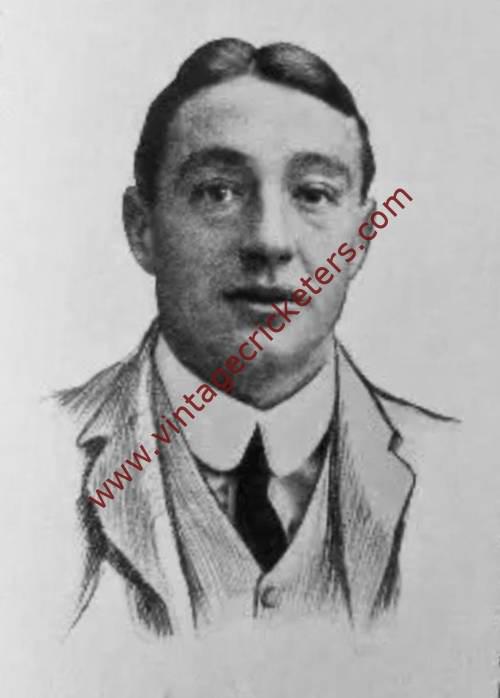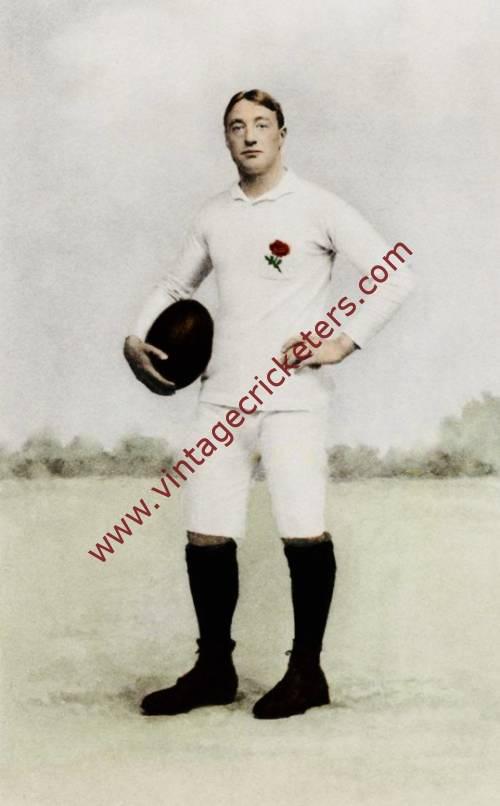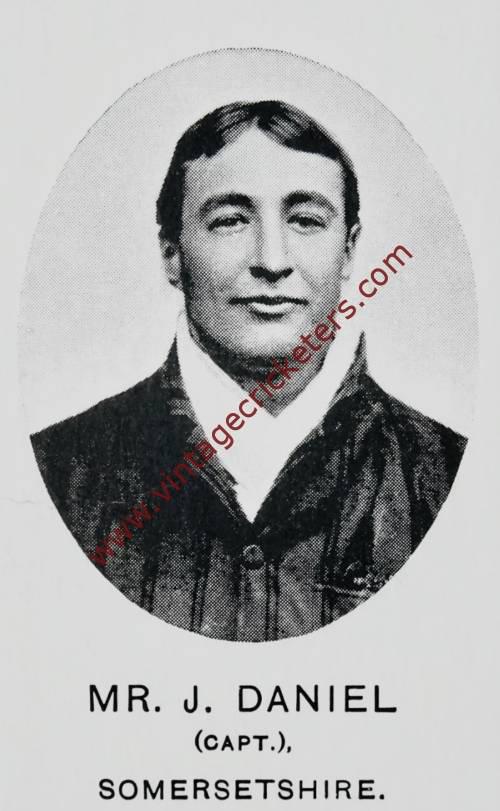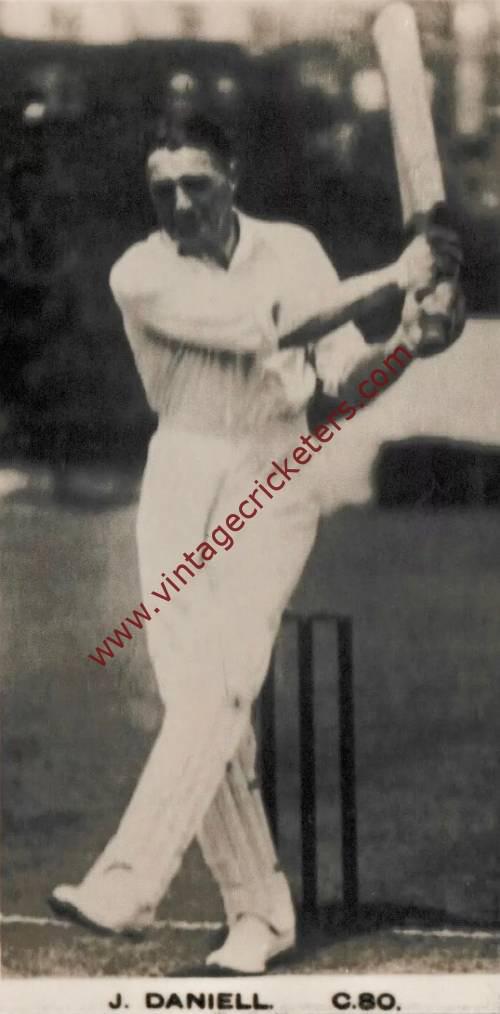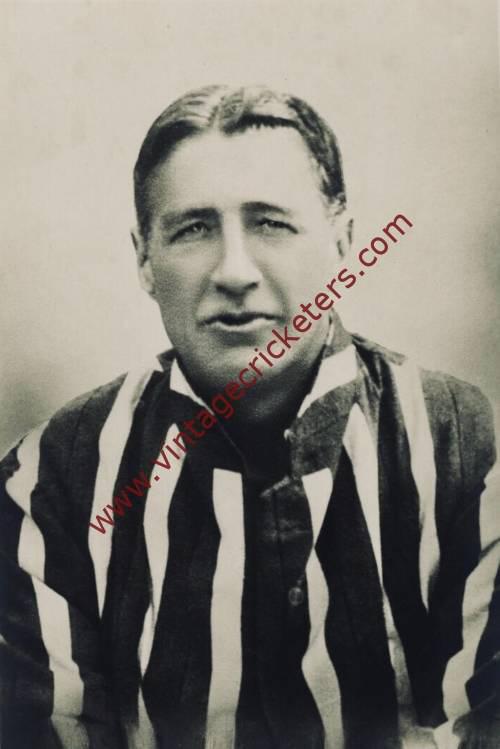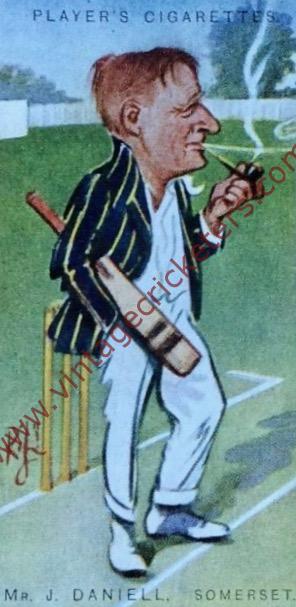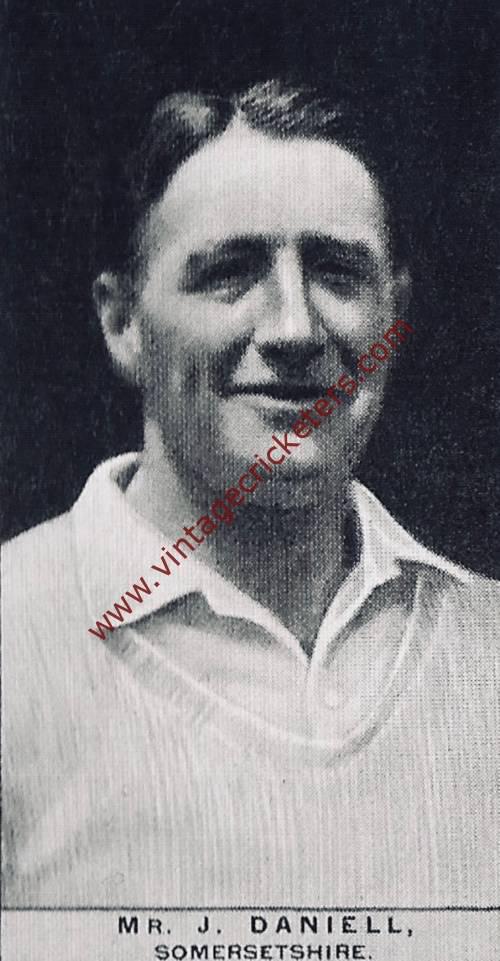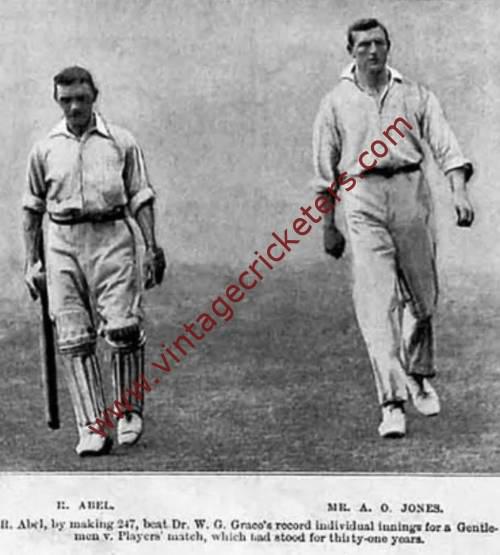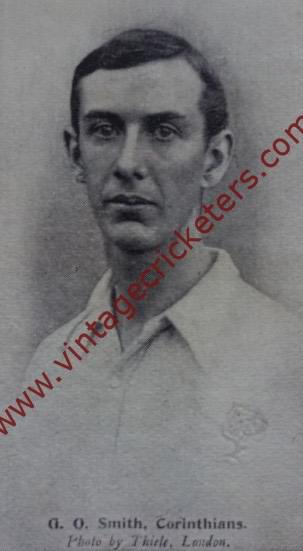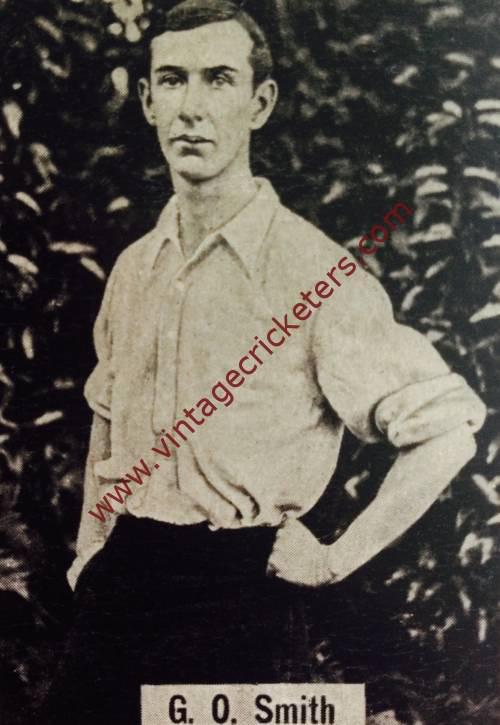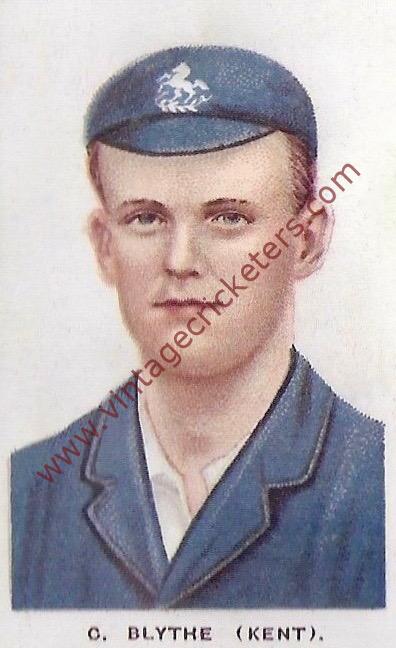Please choose your photo size from the drop down menu below.
If you wish your photo to be framed please select Yes.
Note: 16″x 20″not available in a frame.
Images can also be added to accessories. To order please follow these links
£8.95 – £49.95
Please choose your photo size from the drop down menu below.
If you wish your photo to be framed please select Yes.
Note: 16″x 20″not available in a frame.
Images can also be added to accessories. To order please follow these links
The maximum number of views of this element is reached.
Please contact the webmaster to enable unlimited views.
Bath, Somerset born John Daniell was an international rugby union player for England and a first class cricketer for Cambridge University and Somerset. Educated at Clifton College, he went on to Emmanuel College, Cambridge, where he won Blues at both rugby and cricket. His longer playing career was as a cricketer: he was captain of Somerset for 13 of the 15 seasons in which first class cricket was played between 1908 and 1926, acted as occasional secretary and general organiser for the County over many other years.
However his cricket career was slower to start. In the summer of 1898, having not played for the University cricket team, he was picked for six Somerset matches by captain Sammy Woods, making his first class debut against Lancashire in June 1898. The following season, he again played for Somerset during the University term, and in late June 1899 scored 107, his first century, as Somerset beat Lancashire by 10 wickets. That led to his selection for Cambridge’s last match before the Varsity Match and he retained his place in the team to meet Oxford University.
In 1900, he played fairly regularly for Cambridge University, making a century in the match against Surrey and again won a cricket Blue, but in 1901, his only appearance for the University team was in the Varsity Match. Up to 1904, he played a few matches each season for Somerset, but he was not notably successful as a cricketer and at the end of 1904 he left England to work in his family’s tea estates in India.
Somerset cricket was not very successful in the first decade of the 20th century, and the team was composed of a few professionals of mixed ability, a handful of talented amateurs and a steady procession of mostly ineffectual “country house” cricketers. After Woods retired from the captaincy in 1906, Lionel Palairet, opening batsman and Test player, who had played for Somerset since the County side’s elevation to first class status in 1891, took over for 1907. But at the end of the season, with the County club’s finances in disarray and fixtures with several other counties under threat, Palairet told an acrimonious annual meeting of the club that he was not willing to continue. It appeared possible that the County would be wound up, but Daniell, newly returned to England and back as the protégé of Woods, who remained County secretary, agreed to take on the captaincy for 1908, continuing to serve the County until 1937. During the First World War, Daniell served in the Royal Fusilliers and the Royal Army Service Corps.
The professional staff was cut to just three and Daniell embarked on the policy that was to serve Somerset well for many years: recruiting players from far and wide, particularly from the public schools and the English universities, but also from overseas. The policy did not bring the County any great successes, though at times the team could surprise even the best opponents. But Somerset cricket was rarely dull, and the club remained in business.
As a player, Daniell was a pugnacious batsman of no exceptional talent, batting mostly in the middle order but occasionally promoting himself to open the innings. In almost 30 years of first class cricket spanning 304 first class matches, he scored 10,468 runs with only 9 centuries and 44 half centuries, and two of those centuries were in the same match in 1925, when he hit his highest score or 174 not out and also 108 against Essex, already aged 46. Previously only P.R. Johnson had scored two hundreds in the same match for Somerset. He never achieved 1,000 runs in a first class season, and his career average was just under 22 runs an innings.
He was noted as a fearless fielder, usually in positions in front of and close to the wicket. In his early career and at school, he had bowled fast, but in the 20 years from 1908 until he retired in 1927 he bowled only 10 overs in total in first class cricket – that he took three wickets in them suggests he might have been better than he considered himself, and his 7 career wickets cost only 24,42 a piece. He also took 233 catches in first class cricket.
His main role, though, was as an astute and aggressive captain who used all means at his disposal to make up for the playing deficiencies of the Somerset sides of his time. He also had a larger than life personality with a great sense of humour, Neville Cardus comments: “Somersetshire in those days was one of the country’s – nay, the nation’s – great humorous assets. John Daniell was captain, and amongst his co-laughers and practical jokers were R.C. Robertson-Glasgow (of everlasting and affectionate memory) and M.D. Lyon.”
He was also a national selector for the England cricket team.
As a rugby player he represented Cambridge University as hooker in The Varsity Match with Oxford University for three years. His club rugby was Richmond and he represented England in seven matches between 1899 and 1904, captaining his country between 1900 and 1904. He was an international selector from 1913 and a prominent administrator in the game for many years. He was President of the Rugby Football Union for two seasons from 1945 to 1947.
Robertson-Glasgow wrote a wonderful portrait of Daniel:
“At the end of the 1920 season John Daniell, our captain, said to me: ‘Well, come again next year and bowl some of your inswingers; and for God’s sake burn that straw hat.’ There was a good deal of laughing in the Somerset side, and not a little cursing. The captain excelled at this, and nobody minded. It was part of the show, and would have been missed. Besides he had good reason, for he was shepherd of a strange flock. Like all men of character, he had strong prejudices. He believed that inswingers were Heaven’s gift for hitting, and if assailed by them, he would have a terrific swat, whatever the state of the game. As often as not this would end in a skied catch to long-leg or deep square-leg; but that made no difference to the theory. The same assault would be committed next time.
He believed also in Homburg hats, and my chief memory of these games is Daniell standing with such a hat on, very close at silly-point to Jack White’s bowling, scowling severely at the batsmen, making terrific stops, and sometimes wonderful catches; or perhaps, once in a while having a half-volley driven straight through him, when he would look at White, and some fearful observation would stir unimpressed on his lips.
As a batsman he was best in an awkward situation, for his defence was very fine, and his attack was strong enough to look after itself. He excelled against off-breakers on a difficult pitch. Forward play was the foundation of his method and none that I remember showed better that these off-breaks can often be smothered and played dead with a half-forward stroke. At the same time he never missed a chance of hitting the over-pitched off-break. He had a great duel with Morton, of Derbyshire, one day on a wet pitch at Weston, all sawdust, and off-spinners, and about once in two overs he would hit hard to mid-wicket for four or six. It was the best century I saw that season.
He had a strong contempt for the obsession of back play on fast wickets. This habit was increasing in the early 1920s, and together with exaggerated pad-play, was already beginning to injure batting as a spectacle. I think that in some respects his batting improved with years, as the ability to hit violently was retarded. At any rate, he made a century in each innings at the age of 46, which argues a bedrock correctness of method.
His exhortations to bowlers were memorable. They would begin, as we walked out on to the field: ‘Can you bowl these beggars out?’ After 20 minutes or so, if success were still but a dream, he’d say: ‘Can’t you bowl these beggars out?’ Still no change, And then ‘Oh, I believe I could bowl that beggar out.’
There was a magnificent combativeness in his attitude to the opposing batsmen. If they played with what is known as ‘commendable care’, he would contemplate them from silly-point with a pitying gaze, as if the remainder of their sunless days could most suitably be passed in a wheelchair or rest home for the stricken and palsied. I believe that he stared some self-conscious batsmen from the wicket. They felt that they were a false pretence, and that further tenure was useless.
He was a great leader. You bowled or batted or fielded your best for him. He praised by look more than word, and I have thought sometimes that we and our swerves must have seemed pretty dull stuff to one who had begun under Sam Woods and learnt batting against Tom Richardson and CJ Kortright.
There was no really fast bowling in these years. Sometimes he told us so. But the young don’t believe in that sort of thing.”
| Weight | N/A |
|---|
